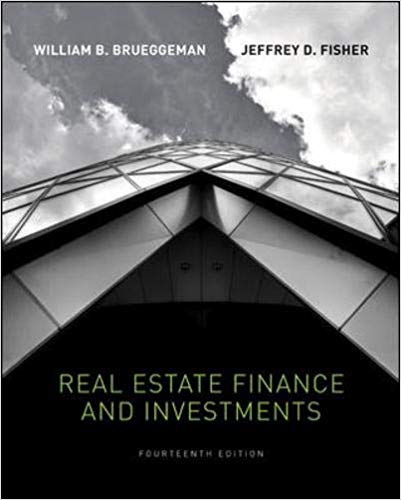Richard Rambo presently owns the Marine Tower office building, which is 20 years old, and is considering
Question:
Richard Rambo presently owns the Marine Tower office building, which is 20 years old, and is considering renovating it. He purchased the property two years ago for $800,000 and financed it with a 20-year, 75 percent loan at 10 percent interest (monthly payments). Of the $800,000, the appraiser indicated that the land was worth $200,000 and the building $600,000. Rambo has been using straight-line depreciation over 39 years (1/39 per year for simplicity). At the present time Marine Tower is producing $90,000 in NOI, and the NOI and property value are expected to increase 2 percent per year. The current market value of the property is $820,000. Rambo estimates that if the Marine Tower office building is renovated at a cost of $200,000, NOI will be about 20 percent higher next year ($108,000 versus $90,000) due to higher rents and lower expenses. He also expects that with the renovation the NOI will increase 3 percent per year instead of 2 percent. Furthermore, Rambo believes that after five years, a new investor will purchase the Marine Tower office building at a price based on capitalizing the projected NOI six years from now at a 10 percent capitalization rate. Selling costs would be 6 percent of the sale price. Rambo is in the 28 percent tax bracket and expects to continue to be in that bracket. He also would not be subject to any passive activity loss limitations. If Rambo does the renovation, he believes he could obtain a new loan at an 11 percent interest rate and a 20-year loan term (monthly payments).
a. Assume that if Rambo does the renovation, he will be able to obtain a new loan that is equal to the balance of the existing loan plus 75 percent of the renovation costs. What is the incremental return (ATIRRe) for doing the renovation versus not doing the renovation? Assume a five-year holding period.
b. Repeat (a) but assume that Rambo is able to obtain a new loan that is equal to 75 percent of the sum of the existing value of the property ($820,000) plus the renovation costs ($200,000). (This assumes that after renovation the value of the property will at least increase by the cost of the renovation.)
c. Explain the difference between the returns calculated in (a) and (b). Is there a difference in the risk associated with each financing alternative?
d. What advice would you give Rambo?
Step by Step Answer:

Real Estate Finance and Investments
ISBN: 978-0073377339
14th edition
Authors: William Brueggeman, Jeffrey Fisher





